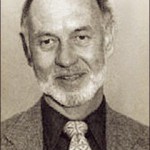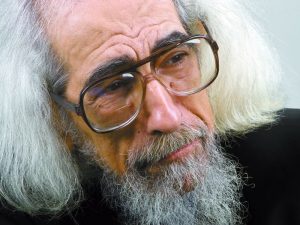Some argue….
Some argue that it is misleading to speak of “dying and rising gods.”65 Greece (Eleusis) and the East did know of dying gods; there were always two, usually an older female goddess and a younger male partner who dies. The older female mourns, and death is partially abolished, but Gerd Theissen argues that there is never a real resurrection.66 Osiris is killed violently, struck or drowned by his brother Set, then cut to pieces. The overcoming of death is not resurrection: Osiris rules as king of the underworld. The ritual around the fate of dying deities is lamentation: cult members join the female deity in mourning the loss of the partner deity. Cult members do not experience the death themselves but lament it. Other scholars argue that . . . .
Balch, David L. “The Suffering of Isis/Io and Paul’s Portrait of Christ Crucified (Gal. 3:1): Frescoes in Pompeian and Roman Houses and in the Temple of Isis in Pompeii.” The Journal of Religion 83, no. 1 (2003): 49.
So what do the #65 and #66 cited sources say?
65 Gerd Theissen, The Religion of the Earliest Churches: Creating a Symbolic World (Minneapolis: Fortress, 1999), pp. 58-59.
It is certainly true that in antiquity we find belief in dying gods. Here there are always two gods: an older female deity and a younger partner deity, usually a male partner. The younger partner deity suffers death. The older one mourns this. In the conflict between life and death, death is partly abolished – but there is never a real resurrection.19
The following survey shows that most of these deities come from the East.20 Only in Eleusis do we find a genuinely Greek cult:
Original area of dissemination Older female deity Younger partner deity Eleusis Demeter Persephone Mesopotamia Ishtar Tammuz Ugarit Anath Baal Phoenicia Cybele Attis Phrygia Cybele Attis Egypt Isis Osiris In the Greek view the gods are really immortal. They live at a distance from death. But the myth which underlies the Eleusinian and Orphic mysteries shows that even the world of the gods is not spared the intervention of death. That is even more true of the Eastern gods. The intervention of death is described in different ways. In the first three cases, with Persephone, Tammuz and Baal, the young partner deity is carried off into the underworld and kept there. In the last three cases the deity is killed violently: Osiris is struck or drowned by his brother Seth and then cut in pieces. Attis castrates himself and dies. Adonis is killed by a wild boar. The overcoming of death is not resurrection. Osiris rules as king of the world of the dead. Persephone has to spend four months of the year in the underworld. The corpse of Attis does not decay. Flowers rise from the blood of Adonis. It is therefore misleading to talk of ‘dying and rising gods’. There are dying gods who wrest some ‘life’ from death by compromises.
Only some of these deities were worshipped in mystery cults, i.e. in cults which were not celebrated in public but into which individuals had to be initiated. Thus there were mysteries of Demeter, Cybele and Isis. At best one could see an analogy to Christian baptism as a dying with Christ in these initiation rites. But that would be to overlook an important difference: the festivals (whether public festivals or ‘private’ mysteries) in which the fate of the dying deities is celebrated are all associated with rites of lamentation; the adherents of the deity join the older female deity in mourning the loss of the partner deity. The adherents thus do not experience the death themselves, but lament it. They identify more with the older, mourning, deity than with the younger, dying, deity, even if there are also the beginnings of the latter identification.
19. For the following remarks cf. above all Dieter Zeller, ‘Die Mysterienkulte und die paulinische Soteriologie (Rom 6, 1-11). Eine Fallstudie zum Synkretismus im Neuen Testament’, in Hermann P. Siler (ed.), Suchhewegungen. Synkretismus kulturelle Identität und kirchliches Bekenntnis, Darmstadt: Wissenschaftliche Buchgesellschaft 1991, 42-6.
20. The table of different partner deities reproduced below comes from Dieter Zeller, Christus unter den Göttern. Zum antiken Umfeld des Christusglaubens, Stuttgart: Katholisches Bibelwerk 1993, 42. There is more information about the individual cults in Hans-Josef Klauck, Die religiose Umwelt des Urchristentums I. Stadt- und Hausreligion, Mysterienkulte, Volksglaube, Stuttgart, Berlin, Cologne: Kohlhammer 1995, 77-128.
(Theissen 58f)
66 Theissen, p. 58, citing Dieter Zeller . . . . See also A. J. M. Wedderburn, Baptism and Resurrection: Studies in Pauline Theology against Its Graeco-Roman Background (Tübingen: Mohr [Siebeck], 1987); Walter Burkert, Ancient Mystery Cults (Cambridge, Mass.: Harvard University Press, 1987), pp. 23, 27, 87, 99-101. See Frederick Brenk, review of Ancient Mystery Cults, by Walter Burkert, Gnomon 61 (1989): 289-92.
The question with which we started out, the possibility of influence of the ideas of the mysteries upon Christian ideas about resurrection led us to steer a hazardous course between the Scylla of so tight a definition of ‘resurrection’ that some Christian accounts of the phenomenon of Christ’s resurrection would be excluded, and the Charybdis of overlooking fundamental differences of substance between various myths and the Christian story. . . .
But once a deity is seen as a symbol of, for instance, the natural cycle of vegetation, or perhaps even came into being as a symbol of that cycle, then it would seem appropriate to speak of that deity’s death and resurrection. But is it? A number of scholars have insisted that it is far more appropriate to speak of the deity’s return. That point may be granted; the vegetation deity returns only to die again; it does not effect any final victory over death, at least not qua vegetation deity, although it may as a god of the dead or a solar deity. Nor, in the Graeco-Roman world, did its devotees see their own destinies in terms of resurrection. . . .
It is when Christians came to express in their own terms the beliefs of non-Christians that we find the tendency to describe those beliefs as including the resurrection of the deity or of his devotees. Now it is true that this means that they saw in those beliefs at least a superficial similarity to their own. But that need not mean that the similarity was anything more than superficial. It is quite another thing to suggest that those beliefs somehow generated the Christian ones. Had the dominant Christian claim been, for instance, one to the effect that Jesus had ascended, had been snatched up to heaven, either pagan (or indeed Jewish) beliefs could have been adduced as possibly influential in the formation of the Christian belief, but ‘resurrection’ is another matter and it is this that is the dominant expression of Christian beliefs about Jesus and also of Christians’ beliefs about their own destiny.
(Wedderburn, 208, 209, 210)
Burkert…
. . . . the pagan evidence for resurrection symbolism is uncompelling at best.
To sum up, there is a dynamic paradox of death and life in all the mysteries associated with the opposites of night and day, darkness and light, below and above, but there is nothing as explicit and resounding as the passages in the New Testament, especially in Saint Paul and in the Gospel of John, concerning dying with Christ and spiritual rebirth. There is as yet no philosophical-historical proof that such passages are directly derived from pagan mysteries; nor should they be used as the exclusive key to the procedures and ideology of mysteries.
(Burkert, 23, 101)
Other scholars argue that . . . .
….. Other scholars argue that Osiris is indeed raised from the dead.67
(Balch, 49)
And where does that citation lead us? Continue reading “Dying and Rising Gods? Scholars are Divided”


